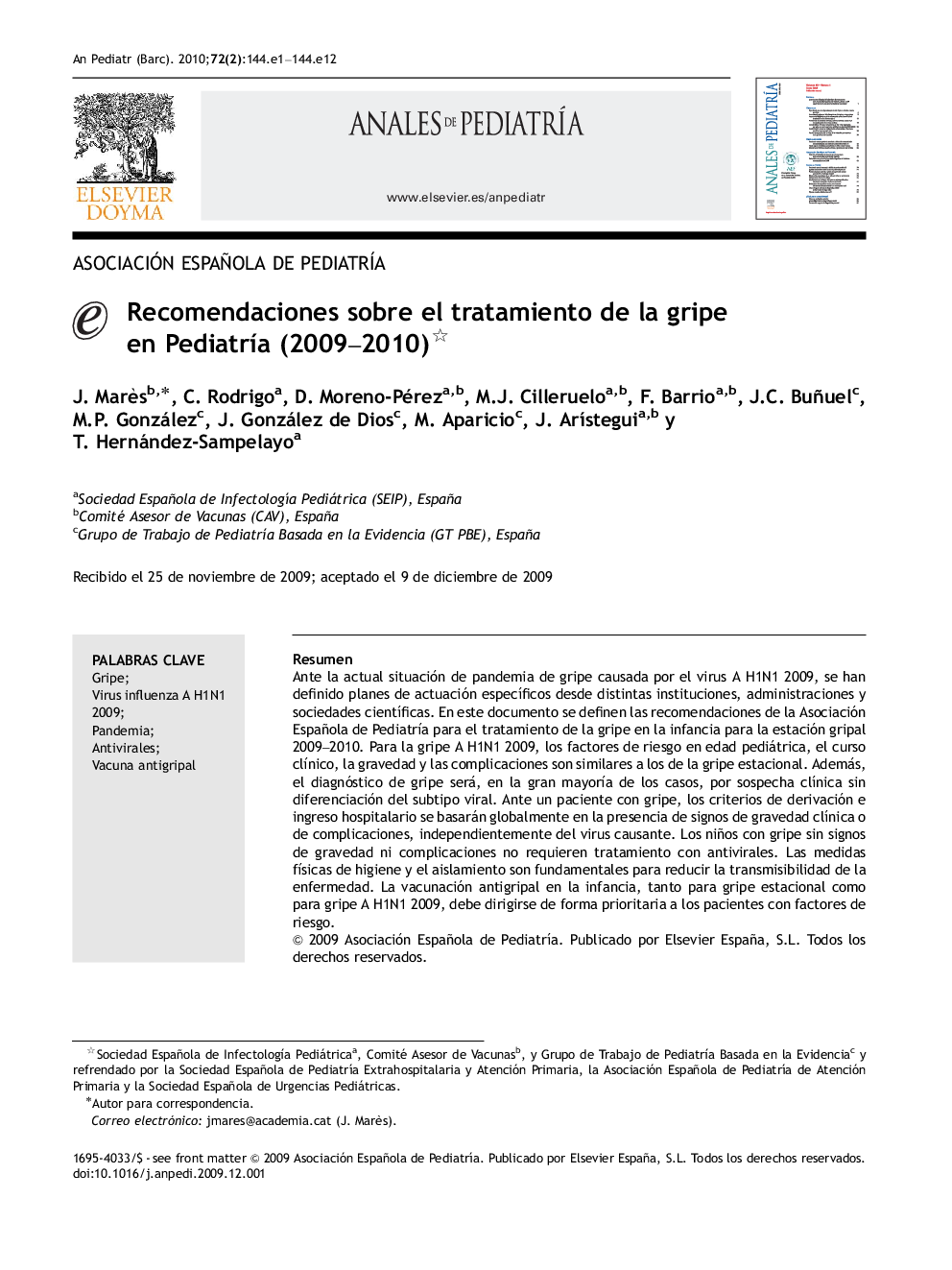| Article ID | Journal | Published Year | Pages | File Type |
|---|---|---|---|---|
| 4142481 | Anales de Pediatría | 2010 | 12 Pages |
Abstract
Specific action plans from various institutions, governments and scientific societies have been identified and implemented to combat the A H1N1 2009 influenza virus pandemic. This document sets out the recommendations of the Spanish Association of Pediatrics for the management of influenza in children for influenza season 2009-2010. The risk factors for influenza A H1N1 2009 in pediatric patients, the clinical course, severity and complications are similar to seasonal influenza. In most cases, the diagnosis of influenza will be based on clinical suspicion, without viral subtype differentiation. In a patient with influenza virus infection, the criteria for referral and hospital admission will be based broadly on the signs of clinical severity or complications, regardless of the causative virus. Children with influenza but with no signs of clinical severity or complications do not require antiviral treatment. Physical measures of hygiene and isolation are essential to reduce the transmissibility of the disease. The influenza vaccines in infancy, for both seasonal influenza and for influenza A H1N1 2009, should be directed primarily at patients with risk factors.
Related Topics
Health Sciences
Medicine and Dentistry
Perinatology, Pediatrics and Child Health
Authors
J. Marès, C. Rodrigo, D. Moreno-Pérez, M.J. Cilleruelo, F. Barrio, J.C. Buñuel, M.P. González, J. González de Dios, M. Aparicio, J. ArÃstegui, T. Hernández-Sampelayo,
